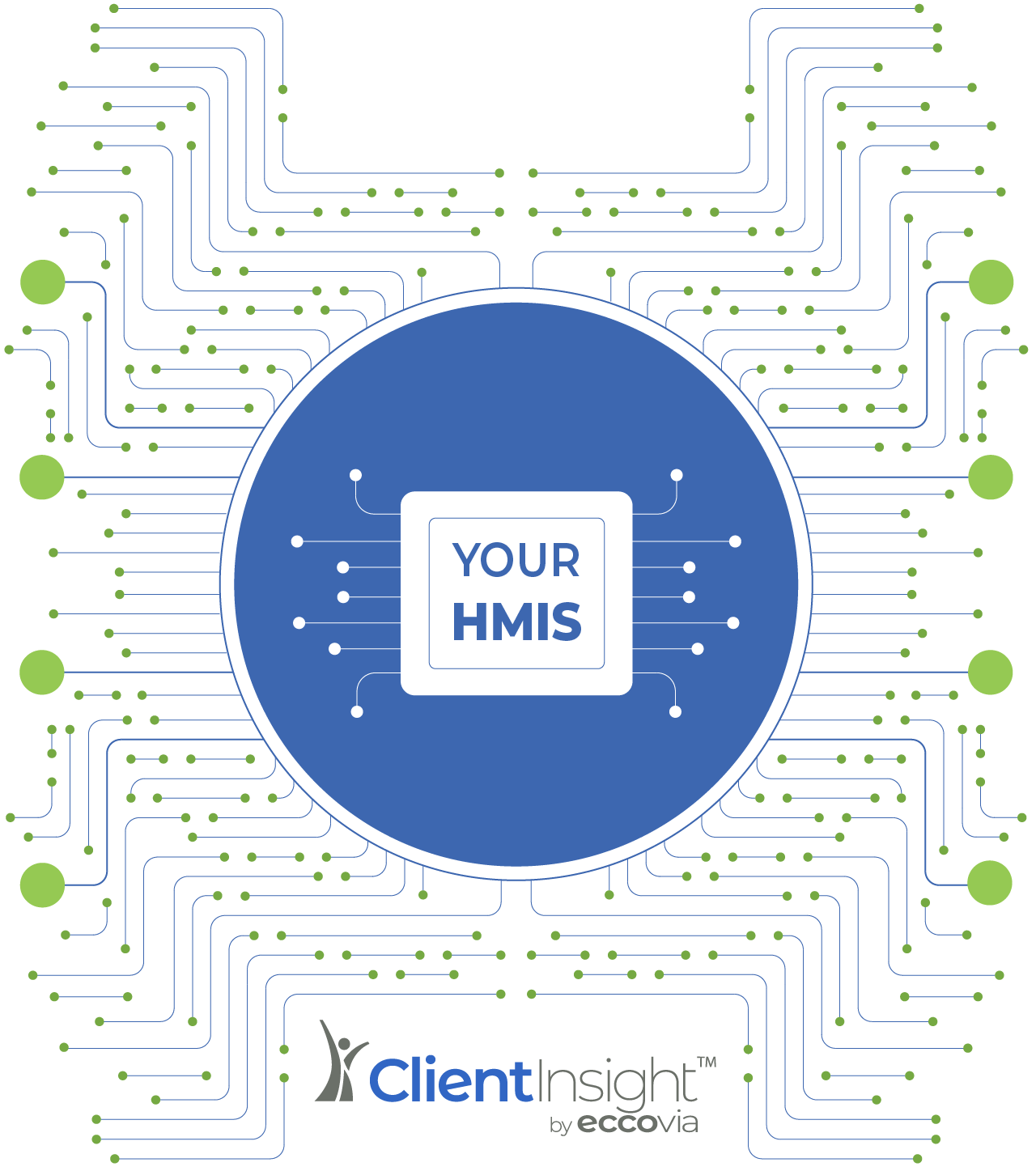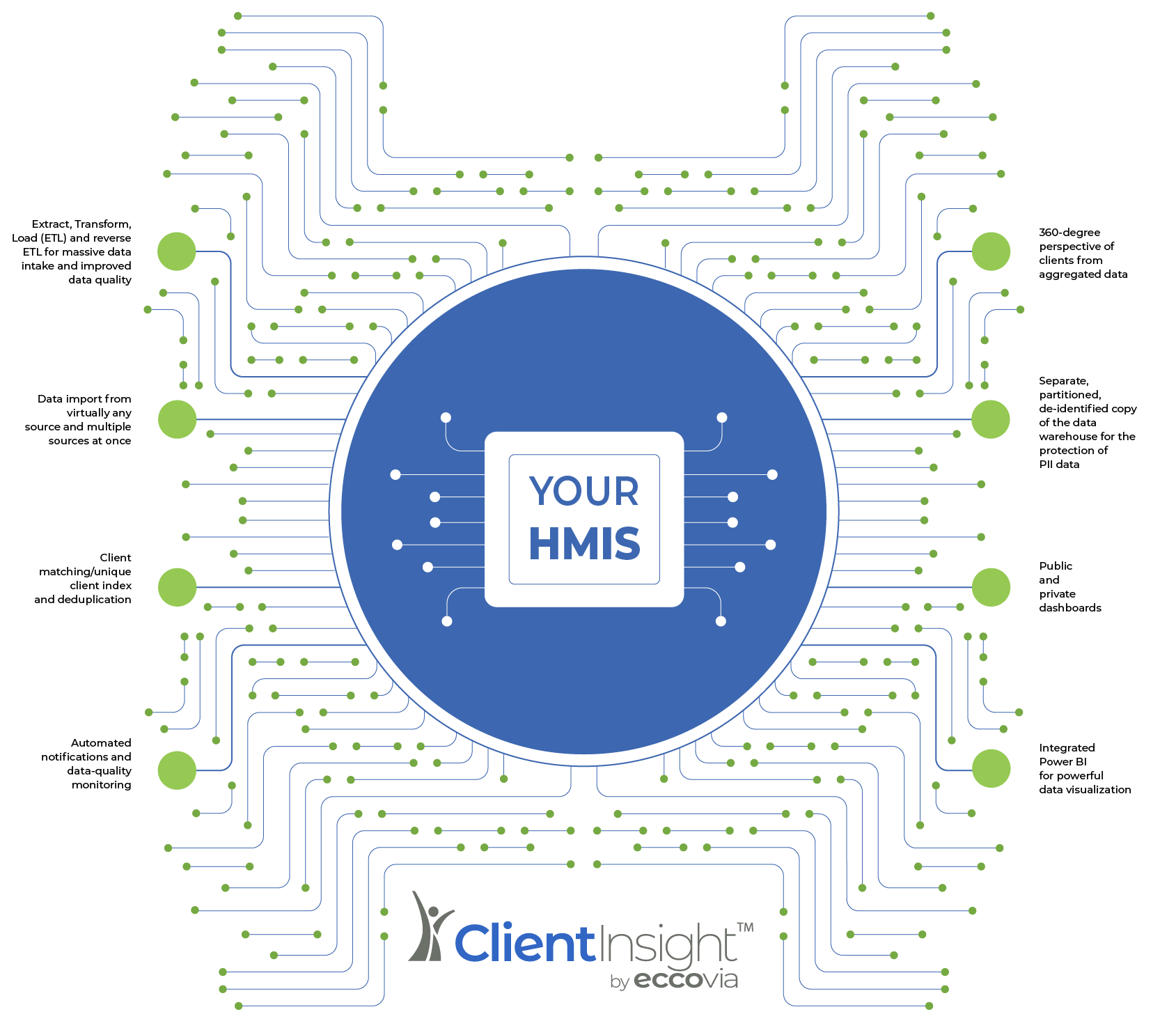
Data Warehousing
Supercharges
HMIS
Extending the Capabilities of
Human Services with
Business Intelligence (BI)
Data Warehousing
Supercharges
HMIS
Extending the Capabilities of Human Services with Business Intelligence (BI)

Adding
Insight
to the Homeless Management
Information System
Adding
Insight
to the Homeless Management
Information System
That’s why communities and state governments need to complement the HMIS model with business intelligence, which is only made possible with data warehousing technology.

Key Distinctions: HMIS and Data Warehouse BI Platforms
| HMIS | Data Warehouse | |
|---|---|---|
| Data Integration and Aggregation |
|
|
| Performance and Scalability |
|
|
Extend the
Capabilities
of Your HMIS with Data Warehousing
Extend the
Capabilities
of Your HMIS with Data Warehousing

Extract, Transform, Load (ETL) and reverse ETL for massive data intake
and improved data quality
- ETL is a process to extract data from source systems, transform it into the desired format, and
load it into the data warehouse—the single source of truth. This enables enormous data intake
from very different data sources and types, an automated ingestion pipeline, and depositing the
transformed data into the warehouse. - Reverse ETL is a process to move data from the data warehouse back into the operational system,
often to synchronize enriched data for enhanced applications. The agencies providing the data have
access the the standardized, cleansed data, providing powerful data analytics to specific providers
and agencies.
Data import from virtually
any source and multiple
sources at once
- With ClientInsight, ingest
data from virtually any
source and format, including
but not limited to HMIS and EHR. - Data sources can include
videos, spreadsheets, audio
files, case notes, and much
more, meaning enormous
amounts of time and
energy can be saved with
an integration process that is
as painless as it is easy.
Client matching/unique client
index and deduplication
- Use AI-driven, probabilistic,
client-matching to mitigate
duplicate data entry. - Train the system with “yes”
and “no” answers to
deduplication questions to
identify and merge duplicate
records with 97% accuracy.
Automated notifications and
data-quality monitoring
- Set up an error threshold so if
the data quality reaches that
threshold, the process is halted
and you are immediately
notified within hours, and not
months later when critical
reporting deadlines are coming up.
360-degree perspective of
clients from aggregated data
- Understand the the SDoH
factors influencing your
clients at the individual and
population levels, including
economic stability,
education, physical
environment, access to
health care, community
context, food environment,
built environment,
behaviors, and
socioeconomic influences.
Separate, partitioned, de-identified
copy of the data warehouse for the
protection of PII data
- Facilitate compliant data-
sharing between social service
providers at any level within
the state or province,
including those for domestic
violence survivors, so data
siloes are eliminated and
true community care
coordination can begin.
Public and private dashboards
- Create public and private
dashboards to report on any
possible data point with robust
visualization within your
community.
Integrated Power BI for
powerful data visualization
- ClientInsight comes with
Power BI built in to give you
the industry best in data
visualization.

Turbo-Charge Your HMIS
to the Next Stage
of Health and Human Services
Turbo-Charge Your HMIS
to the Next Stage
of Health and Human Services
What’s under the hood?
Here’s how ClientInsight works.

Extend the Capabilities
of Your HMIS
Where Can I Learn More?
We at Eccovia know what is required to implement a data warehouse and connect all participants to it, following industry best practices. If you want to extend the capabilities of your HMIS into the next stage of case management evolution, schedule a demo with one of our many experts on health and human services.